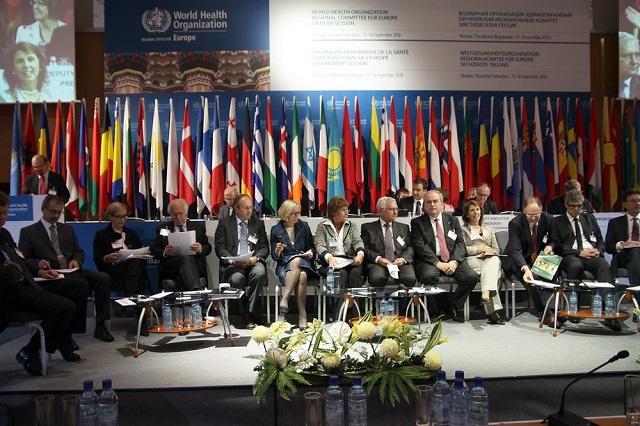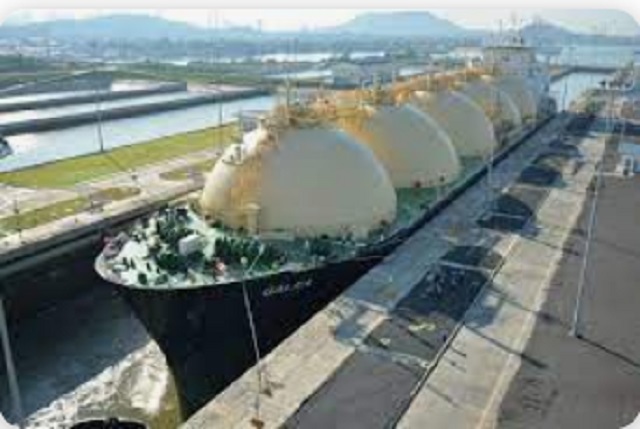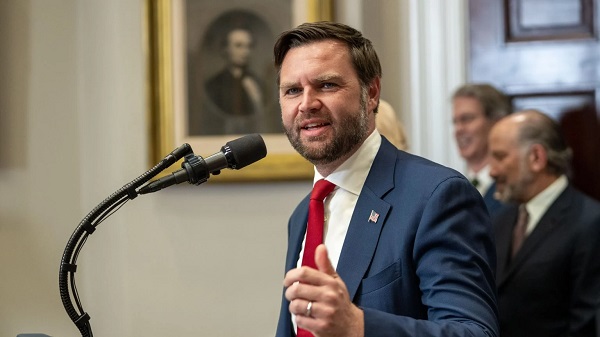Economy
The people will reject the globalist ‘climate’ agenda

From the Fraser Institute
” representatives of governments worldwide endorsed policies that will, if implemented, do extraordinary harm to their own people. Where governments have made even small attempts to take these radical steps, the public has revolted. This calls into question whom the COP28 delegates “represent.” “
It’s tempting to dismiss the outcome of COP28, the recent United Nations climate change conference in the United Arab Emirates, as mere verbiage, such as the “historic” UAE Consensus about transitioning away from fossil fuels. After all, this is the 28th such conference and the previous ones all pretty much came to nothing. On a chart showing the steady rise in global total CO2 emissions since 1950 you cannot spot when the 1997 Kyoto Protocol entered into force (2002), with its supposedly historic language binding developed countries to cap their CO2 emissions at five per cent below 1990 levels by 2012. Likewise, the 2015 Paris Agreement contained historic language binding countries to further deep emission reductions, yet the COP28 declaration begins (paragraph I.2) with an admission that the parties are not complying.
Nonetheless we should not overlook the real meaning of the UAE Consensus. COP agreements used to focus on one thing—targets for reducing greenhouse gases. The UAE Consensus is very different. Across its 196 paragraphs and 10 supplementary declarations it’s a manifesto of global central planning. Some 90,000 government functionaries aspire, in their own words, to oversee and micromanage agriculture, finance, energy, manufacturing, gender relations, health care, air conditioning, building design, and countless other economic and social decisions. It’s supposedly in the name of fighting climate change, but that’s just the pretext. Take it away and they’d appeal to something else.
After all, the climate change issue doesn’t necessitate these plans. Economists have been studying climate change for many decades and have never considered it grounds to phase out fossil fuels, micromanage society, etc. Mainstream scientific findings, coupled with mainstream economic analysis, prescribes moderate emission-pricing policies that rely much more on adaptation than mitigation.
The fact that the UAE Consensus is currently non-binding is beside the point. What matters is what the COP28 delegates said they want to achieve. Two facts stand out—the final consensus document announced plans that would cause enormous economic harm if implemented, and it was unanimously approved by everyone in the room.
The first point is best illustrated by the language around eliminating fossil fuels. Climate policy is supposed to be about optimally reducing greenhouse gas (GHG) emissions. As technology develops to decouple emissions from fuel use, there may eventually be no need to reduce the latter, but activist delegates insisted on the language anyway, making it an end in itself. Fossil fuels are essential for our economic standard of living, and 30 years of economic analysis has consistently shown that despite GHG emissions, phasing them out would do far more harm than good to humanity. Yet the Consensus statement ignored that, even while claiming to be guided by “the science.”
The second point refers to the fact that representatives of governments worldwide endorsed policies that will, if implemented, do extraordinary harm to their own people. Where governments have made even small attempts to take these radical steps, the public has revolted. This calls into question whom the COP28 delegates “represent.” Other than a few elected officials, we didn’t vote for any of them. And even if some heads of state go to a COP meeting intending to oppose the overall agenda, they would not be able to stop it and would be browbeaten into signing the final package.
The UAE Consensus is the latest signal that the real fault line in contemporary society is not right versus left, it’s the people versus (for lack of a better word) the globalists. A decade ago this term was only heard on the conspiracy fringe but has since migrated towards the mainstream as the most apt descriptor of an enormous and influential transnational permanent bureaucracy, which aspires to run everything, even to the public’s detriment, while insulating themselves from democratic limits.
A hallmark of globalists is the way they exempt themselves from rules they want to impose on everyone else. COP28 and Davos meetings perfectly illustrate this—thousands of delegates flying in, many on private jets, to be wined and dined while telling everyone else to learn to do without.
In the cases of both COVID-19 and climate change, the same elite has proven itself to be adept, not at using science to support good decision-making, but at invoking “the science” as a talisman to justify everything they do including censoring public debate. Complex and uncertain matters get reduced to dogmatic slogans by technocrats who ensure political leaders are force fed a narrow one-sided information stream. Experts outside the process are accorded standing based solely on their obeisance to the preferred narrative, not their knowledge or qualifications. Critics are attacked as purveyors of “misinformation” and “disinformation,” and so the existence of opposition to government plans becomes proof of the need to suppress free speech.
But eventually the people get the last word. I am struck, in this context, that despite nonstop fearmongering about an alleged climate crisis, the public tolerates climate policy only insofar as it doesn’t cost anything.
The climate movement might think that by embedding itself in the globalist elite it can accelerate policy adoption without needing to win elections. I think the opposite is happening. The globalists have coopted the climate issue to sell a grotesque central planning agenda that the public has repeatedly rejected. If the UAE Consensus is the future of climate policy, its failure is guaranteed.
Author:
It’s tempting to dismiss the outcome of COP28, the recent United Nations climate change conference in the United Arab Emirates, as mere verbiage, such as the “historic” UAE Consensus about transitioning away from fossil fuels. After all, this is the 28th such conference and the previous ones all pretty much came to nothing. On a chart showing the steady rise in global total CO2 emissions since 1950 you cannot spot when the 1997 Kyoto Protocol entered into force (2002), with its supposedly historic language binding developed countries to cap their CO2 emissions at five per cent below 1990 levels by 2012. Likewise, the 2015 Paris Agreement contained historic language binding countries to further deep emission reductions, yet the COP28 declaration begins (paragraph I.2) with an admission that the parties are not complying.
Nonetheless we should not overlook the real meaning of the UAE Consensus. COP agreements used to focus on one thing—targets for reducing greenhouse gases. The UAE Consensus is very different. Across its 196 paragraphs and 10 supplementary declarations it’s a manifesto of global central planning. Some 90,000 government functionaries aspire, in their own words, to oversee and micromanage agriculture, finance, energy, manufacturing, gender relations, health care, air conditioning, building design, and countless other economic and social decisions. It’s supposedly in the name of fighting climate change, but that’s just the pretext. Take it away and they’d appeal to something else.
After all, the climate change issue doesn’t necessitate these plans. Economists have been studying climate change for many decades and have never considered it grounds to phase out fossil fuels, micromanage society, etc. Mainstream scientific findings, coupled with mainstream economic analysis, prescribes moderate emission-pricing policies that rely much more on adaptation than mitigation.
The fact that the UAE Consensus is currently non-binding is beside the point. What matters is what the COP28 delegates said they want to achieve. Two facts stand out—the final consensus document announced plans that would cause enormous economic harm if implemented, and it was unanimously approved by everyone in the room.
The first point is best illustrated by the language around eliminating fossil fuels. Climate policy is supposed to be about optimally reducing greenhouse gas (GHG) emissions. As technology develops to decouple emissions from fuel use, there may eventually be no need to reduce the latter, but activist delegates insisted on the language anyway, making it an end in itself. Fossil fuels are essential for our economic standard of living, and 30 years of economic analysis has consistently shown that despite GHG emissions, phasing them out would do far more harm than good to humanity. Yet the Consensus statement ignored that, even while claiming to be guided by “the science.”
The second point refers to the fact that representatives of governments worldwide endorsed policies that will, if implemented, do extraordinary harm to their own people. Where governments have made even small attempts to take these radical steps, the public has revolted. This calls into question whom the COP28 delegates “represent.” Other than a few elected officials, we didn’t vote for any of them. And even if some heads of state go to a COP meeting intending to oppose the overall agenda, they would not be able to stop it and would be browbeaten into signing the final package.
The UAE Consensus is the latest signal that the real fault line in contemporary society is not right versus left, it’s the people versus (for lack of a better word) the globalists. A decade ago this term was only heard on the conspiracy fringe but has since migrated towards the mainstream as the most apt descriptor of an enormous and influential transnational permanent bureaucracy, which aspires to run everything, even to the public’s detriment, while insulating themselves from democratic limits.
A hallmark of globalists is the way they exempt themselves from rules they want to impose on everyone else. COP28 and Davos meetings perfectly illustrate this—thousands of delegates flying in, many on private jets, to be wined and dined while telling everyone else to learn to do without.
In the cases of both COVID-19 and climate change, the same elite has proven itself to be adept, not at using science to support good decision-making, but at invoking “the science” as a talisman to justify everything they do including censoring public debate. Complex and uncertain matters get reduced to dogmatic slogans by technocrats who ensure political leaders are force fed a narrow one-sided information stream. Experts outside the process are accorded standing based solely on their obeisance to the preferred narrative, not their knowledge or qualifications. Critics are attacked as purveyors of “misinformation” and “disinformation,” and so the existence of opposition to government plans becomes proof of the need to suppress free speech.
But eventually the people get the last word. I am struck, in this context, that despite nonstop fearmongering about an alleged climate crisis, the public tolerates climate policy only insofar as it doesn’t cost anything.
The climate movement might think that by embedding itself in the globalist elite it can accelerate policy adoption without needing to win elections. I think the opposite is happening. The globalists have coopted the climate issue to sell a grotesque central planning agenda that the public has repeatedly rejected. If the UAE Consensus is the future of climate policy, its failure is guaranteed.
Author:
Business
Canada Can Finally Profit From LNG If Ottawa Stops Dragging Its Feet

From the Frontier Centre for Public Policy
By Ian Madsen
Canada’s growing LNG exports are opening global markets and reducing dependence on U.S. prices, if Ottawa allows the pipelines and export facilities needed to reach those markets
Canada’s LNG advantage is clear, but federal bottlenecks still risk turning a rare opening into another missed opportunity
Canada is finally in a position to profit from global LNG demand. But that opportunity will slip away unless Ottawa supports the pipelines and export capacity needed to reach those markets.
Most major LNG and pipeline projects still need federal impact assessments and approvals, which means Ottawa can delay or block them even when provincial and Indigenous governments are onside. Several major projects are already moving ahead, which makes Ottawa’s role even more important.
The Ksi Lisims floating liquefaction and export facility near Prince Rupert, British Columbia, along with the LNG Canada terminal at Kitimat, B.C., Cedar LNG and a likely expansion of LNG Canada, are all increasing Canada’s export capacity. For the first time, Canada will be able to sell natural gas to overseas buyers instead of relying solely on the U.S. market and its lower prices.
These projects give the northeast B.C. and northwest Alberta Montney region a long-needed outlet for its natural gas. Horizontal drilling and hydraulic fracturing made it possible to tap these reserves at scale. Until 2025, producers had no choice but to sell into the saturated U.S. market at whatever price American buyers offered. Gaining access to world markets marks one of the most significant changes for an industry long tied to U.S. pricing.
According to an International Gas Union report, “Global liquefied natural gas (LNG) trade grew by 2.4 per cent in 2024 to 411.24 million tonnes, connecting 22 exporting markets with 48 importing markets.” LNG still represents a small share of global natural gas production, but it opens the door to buyers willing to pay more than U.S. markets.
LNG Canada is expected to export a meaningful share of Canada’s natural gas when fully operational. Statistics Canada reports that Canada already contributes to global LNG exports, and that contribution is poised to rise as new facilities come online.
Higher returns have encouraged more development in the Montney region, which produces more than half of Canada’s natural gas. A growing share now goes directly to LNG Canada.
Canadian LNG projects have lower estimated break-even costs than several U.S. or Mexican facilities. That gives Canada a cost advantage in Asia, where LNG demand continues to grow.
Asian LNG prices are higher because major buyers such as Japan and South Korea lack domestic natural gas and rely heavily on imports tied to global price benchmarks. In June 2025, LNG in East Asia sold well above Canadian break-even levels. This price difference, combined with Canada’s competitive costs, gives exporters strong margins compared with sales into North American markets.
The International Energy Agency expects global LNG exports to rise significantly by 2030 as Europe replaces Russian pipeline gas and Asian economies increase their LNG use. Canada is entering the global market at the right time, which strengthens the case for expanding LNG capacity.
As Canadian and U.S. LNG exports grow, North American supply will tighten and local prices will rise. Higher domestic prices will raise revenues and shrink the discount that drains billions from Canada’s economy.
Canada loses more than $20 billion a year because of an estimated $20-per-barrel discount on oil and about $2 per gigajoule on natural gas, according to the Frontier Centre for Public Policy’s energy discount tracker. Those losses appear directly in public budgets. Higher natural gas revenues help fund provincial services, health care, infrastructure and Indigenous revenue-sharing agreements that rely on resource income.
Canada is already seeing early gains from selling more natural gas into global markets. Government support for more pipelines and LNG export capacity would build on those gains and lift GDP and incomes. Ottawa’s job is straightforward. Let the industry reach the markets willing to pay.
Ian Madsen is a senior policy analyst at the Frontier Centre for Public Policy.
Economy
Affordable housing out of reach everywhere in Canada

From the Fraser Institute
By Steven Globerman, Joel Emes and Austin Thompson
According to our new study, in 2023 (the latest year of comparable data), typical homes on the market were unaffordable for families earning the local median income in every major Canadian city
The dream of homeownership is alive, but not well. Nearly nine in ten young Canadians (aged 18-29) aspire to own a home—but share a similar worry about the current state of housing in Canada.
Of course, those worries are justified. According to our new study, in 2023 (the latest year of comparable data), typical homes on the market were unaffordable for families earning the local median income in every major Canadian city. It’s not just Vancouver and Toronto—housing affordability has eroded nationwide.
Aspiring homeowners face two distinct challenges—saving enough for a downpayment and keeping up with mortgage payments. Both have become harder in recent years.
For example, in 2014, across 36 of Canada’s largest cities, a 20 per cent downpayment for a typical home—detached house, townhouse, condo—cost the equivalent of 14.1 months (on average) of after-tax income for families earning the median income. By 2023, that figure had grown to 22.0 months—a 56 per cent increase. During the same period for those same families, a mortgage payment for a typical home increased (as a share of after-tax incomes) from 29.9 per cent to 56.6 per cent.
No major city has been spared. Between 2014 and 2023, the price of a typical home rose faster than the growth of median after-tax family income in 32 out of 36 of Canada’s largest cities. And in all 36 cities, the monthly mortgage payment on a typical home grew (again, as a share of median after-tax family income), reflecting rising house prices and higher mortgage rates.
While the housing affordability crisis is national in scope, the challenge differs between cities.
In 2023, a median-income-earning family in Fredericton, the most affordable large city for homeownership in Canada, had save the equivalent of 10.6 months of after-tax income ($56,240) for a 20 per cent downpayment on a typical home—and the monthly mortgage payment ($1,445) required 27.2 per cent of that family’s after-tax income. Meanwhile, a median-income-earning family in Vancouver, Canada’s least affordable city, had to spend the equivalent of 43.7 months of after-tax income ($235,520) for a 20 per cent downpayment on a typical home with a monthly mortgage ($6,052) that required 112.3 per cent of its after-tax income—a financial impossibility unless the family could rely on support from family or friends.
The financial barriers to homeownership are clearly greater in Vancouver. But, crucially, neither city is truly “affordable.” In Fredericton and Vancouver, as in every other major Canadian city, buying a typical home with the median income produces a debt burden beyond what’s advisable. Recent house price declines in cities such as Vancouver and Toronto have provided some relief, but homeownership remains far beyond the reach of many families—and a sharp slowdown in homebuilding threatens to limit further gains in affordability.
For families priced out of homeownership, renting doesn’t offer much relief, as rent affordability has also declined in nearly every city. In 2014, rental rates for the median-priced rental unit required 19.8 per cent of median after-tax family income, on average across major cities. By 2023, that figure had risen to 23.5 per cent. And in the least affordable cities for renters, Toronto and Vancouver, a median-priced rental required more than 30 per cent of median after-tax family income. That’s a heavy burden for Canada’s renters who typically earn less than homeowners. It’s also an added financial barrier to homeownership— many Canadian families rent for years before buying their first home, and higher rents make it harder to save for a downpayment.
In light of these realities, Canadians should ask—why have house prices and rental rates outpaced income growth?
Poor public policy has played a key role. Local regulations, lengthy municipal approval processes, and costly taxes and fees all combine to hinder housing development. And the federal government allowed a historic surge in immigration that greatly outpaced new home construction. It’s simple supply and demand—when more people chase a limited (and restricted) supply of homes, prices rise. Meanwhile, after-tax incomes aren’t keeping pace, as government policies that discourage investment and economic growth also discourage wage growth.
Canadians still want to own homes, but a decade of deteriorating affordability has made that a distant prospect for many families. Reversing the trend will require accelerated homebuilding, better-paced immigration and policies that grow wages while limiting tax bills for Canadians—changes governments routinely promise but rarely deliver.
-

 Focal Points2 days ago
Focal Points2 days agoCommon Vaccines Linked to 38-50% Increased Risk of Dementia and Alzheimer’s
-

 Business2 days ago
Business2 days agoLoblaws Owes Canadians Up to $500 Million in “Secret” Bread Cash
-

 Business23 hours ago
Business23 hours agoThe EU Insists Its X Fine Isn’t About Censorship. Here’s Why It Is.
-

 Dan McTeague2 days ago
Dan McTeague2 days agoWill this deal actually build a pipeline in Canada?
-

 Economy19 hours ago
Economy19 hours agoAffordable housing out of reach everywhere in Canada
-

 Censorship Industrial Complex2 days ago
Censorship Industrial Complex2 days agoUS Condemns EU Censorship Pressure, Defends X
-

 Banks2 days ago
Banks2 days agoTo increase competition in Canadian banking, mandate and mindset of bank regulators must change
-

 Business13 hours ago
Business13 hours agoThe Climate-Risk Industrial Complex and the Manufactured Insurance Crisis








